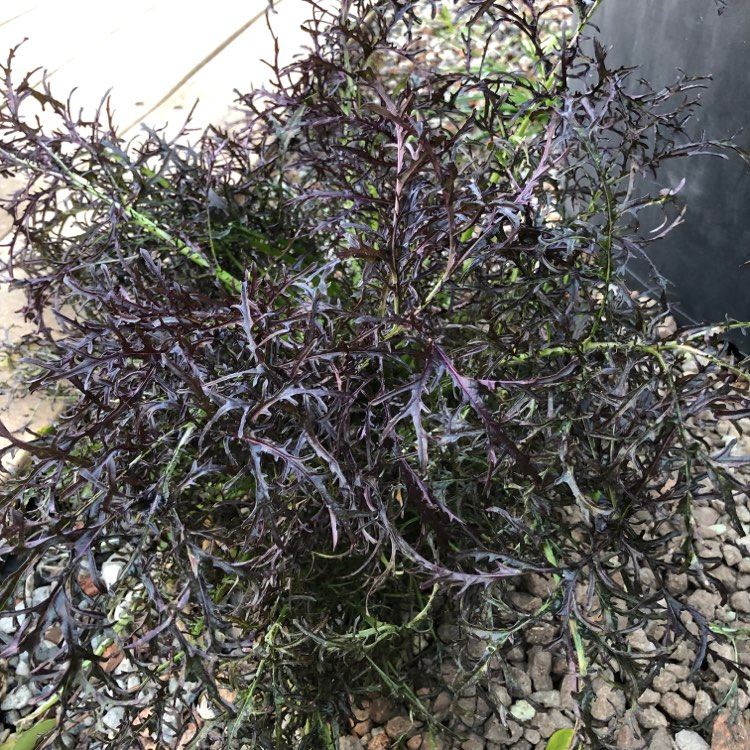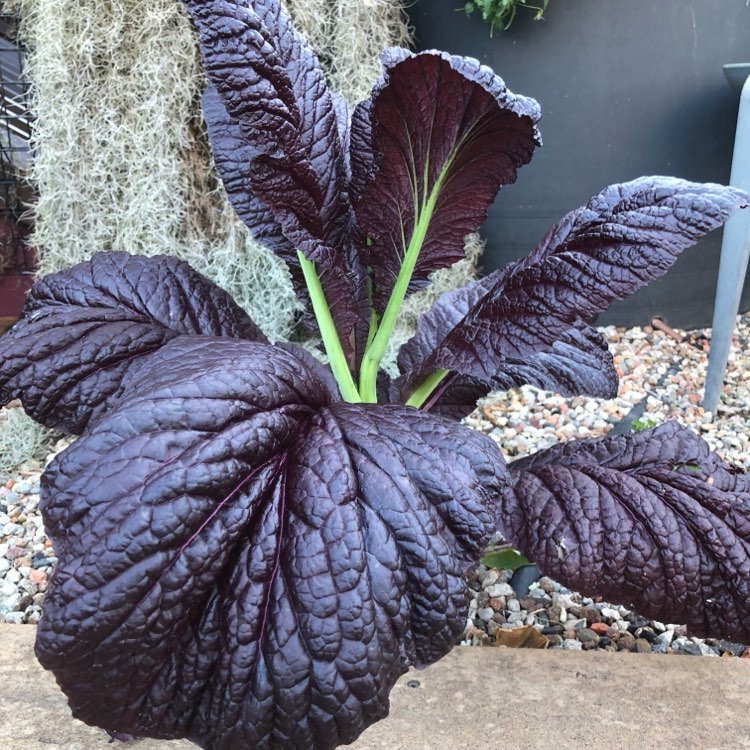Botanical name : Brassica juncea
Common name : Mustard, Mustard greens
Intermediate difficulty for seed saving
Lifecycle: Annual
Pollination: Insect pollinated and self-pollinated
Mating system: Perfect flowers
Suggested spacing: 45 to 60cm
Seed specific requirements: None
Isolation distance: 250 metres or more
Population size: 5 to 20 plants
Seed maturity: Pods turn brown when seed is mature
Processing method: Dry threshing, sieving and winnowing
Expected seed viability: 4 to 6 years
Images


Growing for seed
Brassica juncea varieties will need to be isolated from other B. juncea varieties to avoid cross-pollination. Isolation distances of at least 250 metres are required.
Selection
Plants being grown for seed should be selected on form and vigour. Specific traits will depend on the variety being grown for seed.
Harvest
Pods mature at the bottom of flower stalks first. The first set pods will be at risk of splitting and seed falling in the garden while possibly still flowering at the top of the stalk. The biggest and best seed will come from the first set pods. Cut flower stalks as soon as the bottom most pods are brown and crisp. If there is any sign of those pods starting to shatter in the field the stalks should be collected promptly.
Stalks can be put into large harvest bags or spread out on tarps for drying.
Processing
Dried stalk and pods are easily threshed by walking on them. Sieves can be used to remove the seeds from the bulky stalk and pod fragments. Winnowing will remove smaller frass and leave the seeds.
Storage
After processing seed should be left in a paper bag for a few weeks. Even these small seeds can hold a surprising amount of moisture.
There is a fair likelihood that insect pests will have laid their eggs in or on the seed. To stop them in their tracks one of the easiest methods of control is to freeze the seed for a few days. To do this the seed must be absolutely dry first. It then must be placed in a sealed airtight container – like a glass jar – and left in a freezer for 48 to 72 hours to kill pests and their eggs.
Seed is best stored in an airtight container where it is dark, cool and dry.
Contributors
Liz Worth, Nellie Pryke
